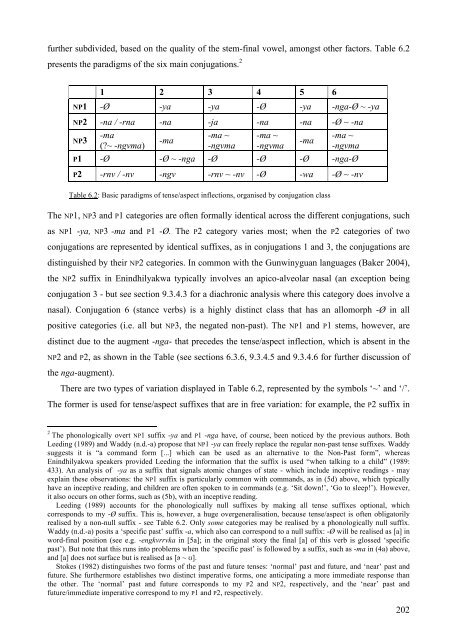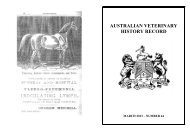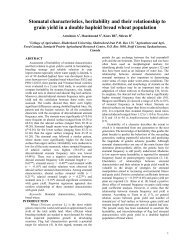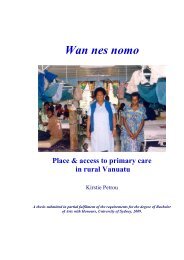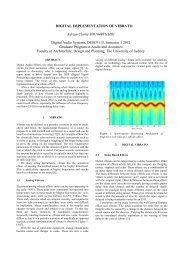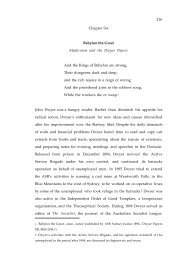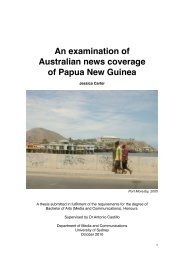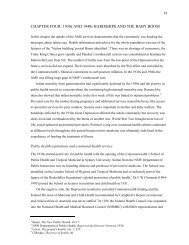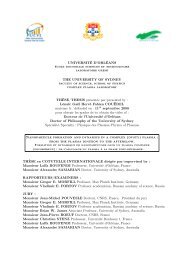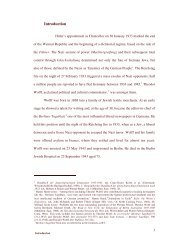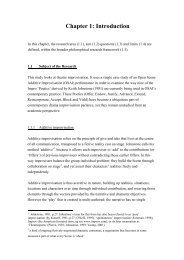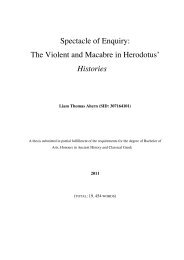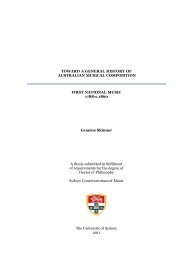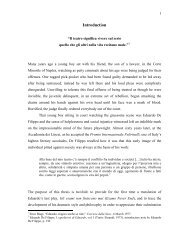Chapter 6: Tense, aspect and mood
Chapter 6: Tense, aspect and mood
Chapter 6: Tense, aspect and mood
Create successful ePaper yourself
Turn your PDF publications into a flip-book with our unique Google optimized e-Paper software.
further subdivided, based on the quality of the stem-final vowel, amongst other factors. Table 6.2<br />
presents the paradigms of the six main conjugations. 2<br />
1 2 3 4 5 6<br />
NP1 -Ø -ya -ya -Ø -ya -nga-Ø ~ -ya<br />
NP2 -na / -rna -na -ja -na -na -Ø ~ -na<br />
NP3<br />
-ma<br />
(?~ -ngvma)<br />
-ma<br />
-ma ~<br />
-ngvma<br />
-ma ~<br />
-ngvma<br />
-ma<br />
-ma ~<br />
-ngvma<br />
P1 -Ø -Ø ~ -nga -Ø -Ø -Ø -nga-Ø<br />
P2 -rnv / -nv -ngv -rnv ~ -nv -Ø -wa -Ø ~ -nv<br />
Table 6.2: Basic paradigms of tense/<strong>aspect</strong> inflections, organised by conjugation class<br />
The NP1, NP3 <strong>and</strong> P1 categories are often formally identical across the different conjugations, such<br />
as NP1 -ya, NP3 -ma <strong>and</strong> P1 -Ø. The P2 category varies most; when the P2 categories of two<br />
conjugations are represented by identical suffixes, as in conjugations 1 <strong>and</strong> 3, the conjugations are<br />
distinguished by their NP2 categories. In common with the Gunwinyguan languages (Baker 2004),<br />
the NP2 suffix in Enindhilyakwa typically involves an apico-alveolar nasal (an exception being<br />
conjugation 3 - but see section 9.3.4.3 for a diachronic analysis where this category does involve a<br />
nasal). Conjugation 6 (stance verbs) is a highly distinct class that has an allomorph -Ø in all<br />
positive categories (i.e. all but NP3, the negated non-past). The NP1 <strong>and</strong> P1 stems, however, are<br />
distinct due to the augment -nga- that precedes the tense/<strong>aspect</strong> inflection, which is absent in the<br />
NP2 <strong>and</strong> P2, as shown in the Table (see sections 6.3.6, 9.3.4.5 <strong>and</strong> 9.3.4.6 for further discussion of<br />
the nga-augment).<br />
There are two types of variation displayed in Table 6.2, represented by the symbols ‘~’ <strong>and</strong> ‘/’.<br />
The former is used for tense/<strong>aspect</strong> suffixes that are in free variation: for example, the P2 suffix in<br />
2 The phonologically overt NP1 suffix -ya <strong>and</strong> P1 -nga have, of course, been noticed by the previous authors. Both<br />
Leeding (1989) <strong>and</strong> Waddy (n.d.-a) propose that NP1 -ya can freely replace the regular non-past tense suffixes. Waddy<br />
suggests it is “a comm<strong>and</strong> form [...] which can be used as an alternative to the Non-Past form”, whereas<br />
Enindhilyakwa speakers provided Leeding the information that the suffix is used “when talking to a child” (1989:<br />
433). An analysis of -ya as a suffix that signals atomic changes of state - which include inceptive readings - may<br />
explain these observations: the NP1 suffix is particularly common with comm<strong>and</strong>s, as in (5d) above, which typically<br />
have an inceptive reading, <strong>and</strong> children are often spoken to in comm<strong>and</strong>s (e.g. ‘Sit down!’, ‘Go to sleep!’). However,<br />
it also occurs on other forms, such as (5b), with an inceptive reading.<br />
Leeding (1989) accounts for the phonologically null suffixes by making all tense suffixes optional, which<br />
corresponds to my -Ø suffix. This is, however, a huge overgeneralisation, because tense/<strong>aspect</strong> is often obligatorily<br />
realised by a non-null suffix - see Table 6.2. Only some categories may be realised by a phonologically null suffix.<br />
Waddy (n.d.-a) posits a ‘specific past’ suffix -a, which also can correspond to a null suffix: -Ø will be realised as [a] in<br />
word-final position (see e.g. -engkvrrvka in [5a]; in the original story the final [a] of this verb is glossed ‘specific<br />
past’). But note that this runs into problems when the ‘specific past’ is followed by a suffix, such as -ma in (4a) above,<br />
<strong>and</strong> [a] does not surface but is realised as [əә ~ ʊ].<br />
Stokes (1982) distinguishes two forms of the past <strong>and</strong> future tenses: ‘normal’ past <strong>and</strong> future, <strong>and</strong> ‘near’ past <strong>and</strong><br />
future. She furthermore establishes two distinct imperative forms, one anticipating a more immediate response than<br />
the other. The ‘normal’ past <strong>and</strong> future corresponds to my P2 <strong>and</strong> NP2, respectively, <strong>and</strong> the ‘near’ past <strong>and</strong><br />
future/immediate imperative correspond to my P1 <strong>and</strong> P2, respectively.<br />
202


